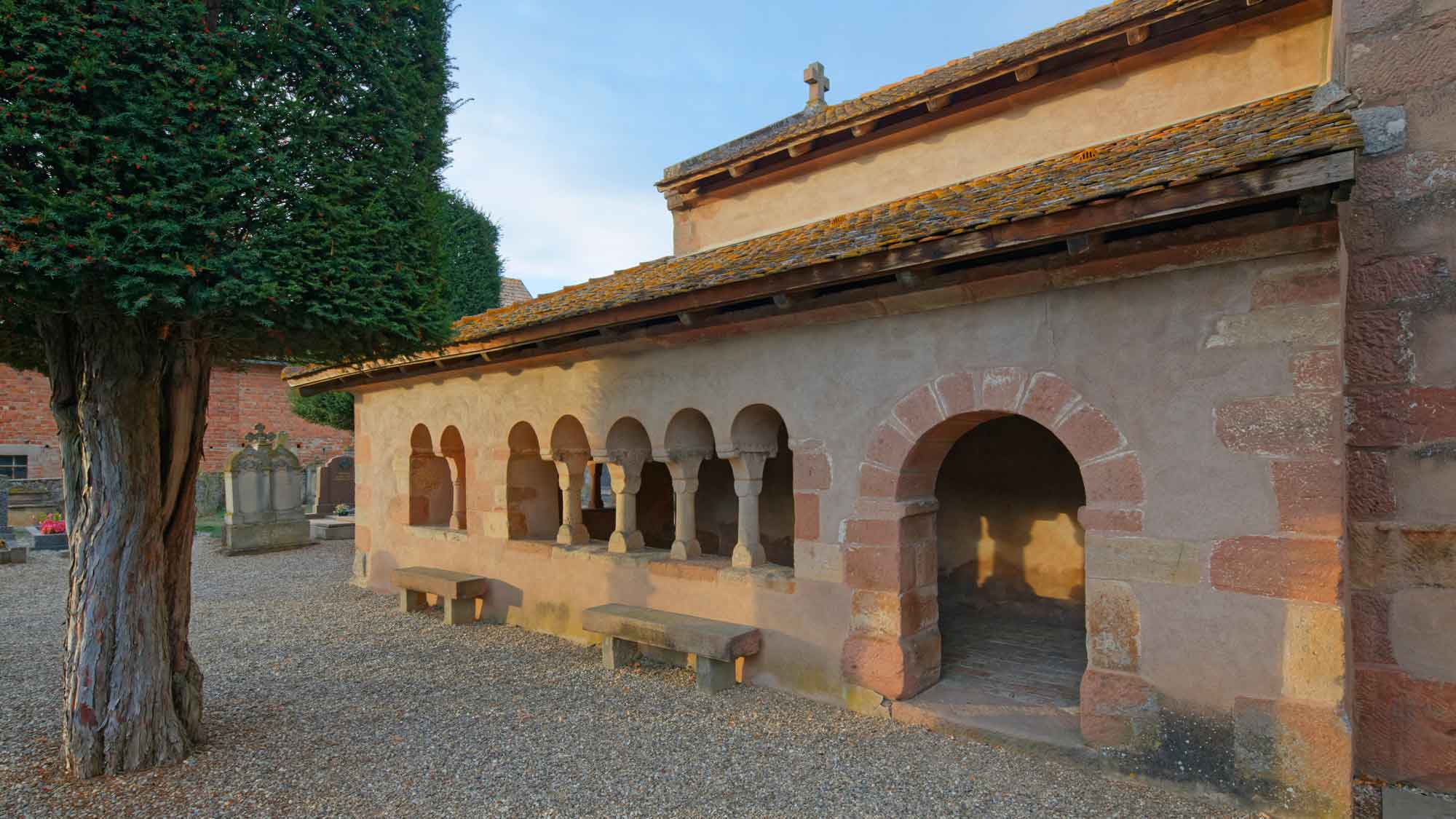Sainte-Marguerite - a place to dream
Nothing in Epfig, the humble wine village between Sélestat and Barr, points to special sights. However, if you turn into the center of Rue Sainte-Marguerite, which continues to Kogenheim, you will find an unexpected treasure at the end of the row of houses: the Romanesque St. Margaret chapel lined with yew trees. It is enclosed by a wall together with its small cemetery, and it is said that it may have been the church of a hamlet of the same name. The cross-shaped chapel is one of the oldest Romanesque monuments in Alsace and dates from the first quarter of the 11th century. Around a hundred years later it was expanded by an arcade gallery, similar to a small cloister.
On the northern outer wall there is an ossuary, an extension from the 19th century, behind the bars of which carefully piled skulls and dead legs can be seen. A 1977 investigation found that it must be the victims who, under Antoine le Lorrain, fought against the oppression of the peasant movement in 1525.


